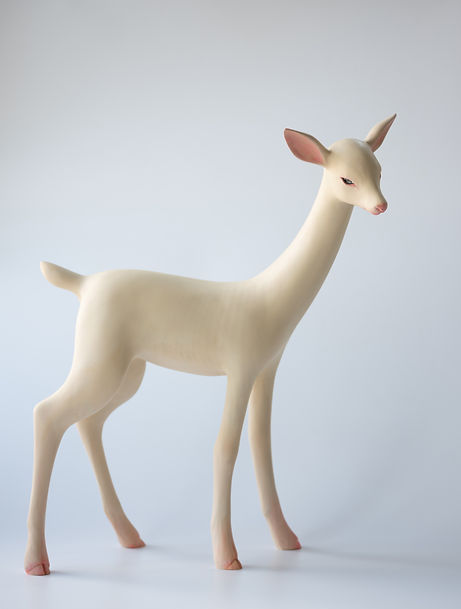
Wonderland
この度メグミオギタギャラリーでは、グループ展 “Wonderland” を開催いたします。ストレスの多い日常生活の中で、束の間の現実逃避を求める…そんな私たちに打って付けの場所が、今展のテーマであるワンダーランドです。見慣れた世界に留まっていれば、心の平穏を保つことはできます。一方で人々が芸術に魅了されるのは、居心地の良さよりも、もっと刺激的で特別な体験を求めるからに他なりません。誰しも子供の頃は、日々どんなことが起こるのかと、胸が高鳴っていたことでしょう。ワンダーランドのキャラクターたちは、鑑賞者に当時の高揚感を呼び起こしてくれます。またそこには、まるでうたた寝の中で見た細切れの夢が一つにつながるように、奇妙でありながらどこか理にかなっているような、不思議な感覚が存在します。かつてパブロ・ピカソは、「芸術とは、私たちに真実を悟らせる嘘である。」と語りました。個性豊かな6人の作家による、擬人化された動物や、巨大なヒトデなどの作品で構成されたスペクタクルを通して、私たちは確かに存在していることを再認識するのです。
Dates
2024年2月2日(金) - 3月16日(土)
12:00 - 18:00
日・月・2月23日(金) 休廊
Contact
メグミオギタギャラリー
〒104-0061 東京都中央区銀座2-16-12 B1

ゲイリー・ベースマンは歴史、遺産、人間の在り方、特に愛や憧れ、喪失感を研究する学際的なアーティストです。「人生のほろ苦さの美しさ」を称える、ユニークな図像と幻想的な視覚的物語を通して、彼の作品は大衆文化とファインアートの世界を融合させています。ベースマンは1960年に生まれ、生活が劇的に変化し、政治や文化が家庭に浸透したロサンゼルスで生まれ育ちました。メディアやハリウッドの影響、そしてロサンゼルスの影響力のある美術界が、ベースマンの美術の捉え方、作り方につながっていきました。そして、手法、目的、観客の枠に捉われず多面的な創作活動を行った、彼が敬愛するアーティストたちのように、“Pervasive Art”(浸透型アート)という独自の造語を生み出しました。ベースマンは、日常の観察や経験をドローイング、ペインティング、写真、ビデオ、インスタレーションアート、パフォーマンス、ファッション、トイデザイン、ソーシャルメディアなどの作品へと次々に変換しています。
ゲイリー・ベースマン, Spring Bunny, 2023, 50.8 x 40.6 cm, Acrylic on canvas
ミヒャエル・ゾーヴァ, Illustration for........, 2018, 17.5 x 33 cm, Acrylic on paper
土屋仁応, 鹿, 2023, 59.5 x 50 x 22 cm, Painted camphor wood, crystal
小林孝亘は東京都に生まれ、1986年愛知県立芸術大学美術学部油画科を卒業しました。当時、絵画制作において社会からの無理解を感じていた小林は、自分自身を潜水艦とみなして描きました。また、木漏れ日を希望の象徴としていましたが、日常の景色や物を照らすその光に次第に魅了され、作品の中心と考えるようになると、潜水艦は画面から消えていきました。小林は世界を明度で捉え、薄く溶いた絵具を何層も重ねることで、光と影を表現します。そこには存在することの曖昧さや儚さという、命ある全てのものにとって普遍的な主題があります。代表作の枕は、鑑賞者に安らぎや休息感を与えると同時に、一歩ずつ確実に死に向かっていることも意識させる、両義性を持ったモチーフの一つです。そして、蛸壺の中で外界に思いを託すタコは、かつての作家の姿と重なり、制作の根底は不変であることが分かります。小林は新たな視点で身近な世��界を純化し、心を震わせる光を作品に宿す、類稀な作家と言えます。

小林孝亘, Pillow, 2006-2007, 50 x 60 cm, Oil on canvas
田中福男, Selfish-05 【Yourself】, 2023, 40 x 12 x 12 cm, Borosilicate glass, beeswax on walnut
重野克明, 逆流のエロス オモテナシ, 2019, 9 x 16.5 x 12.2 cm, Ceramic



